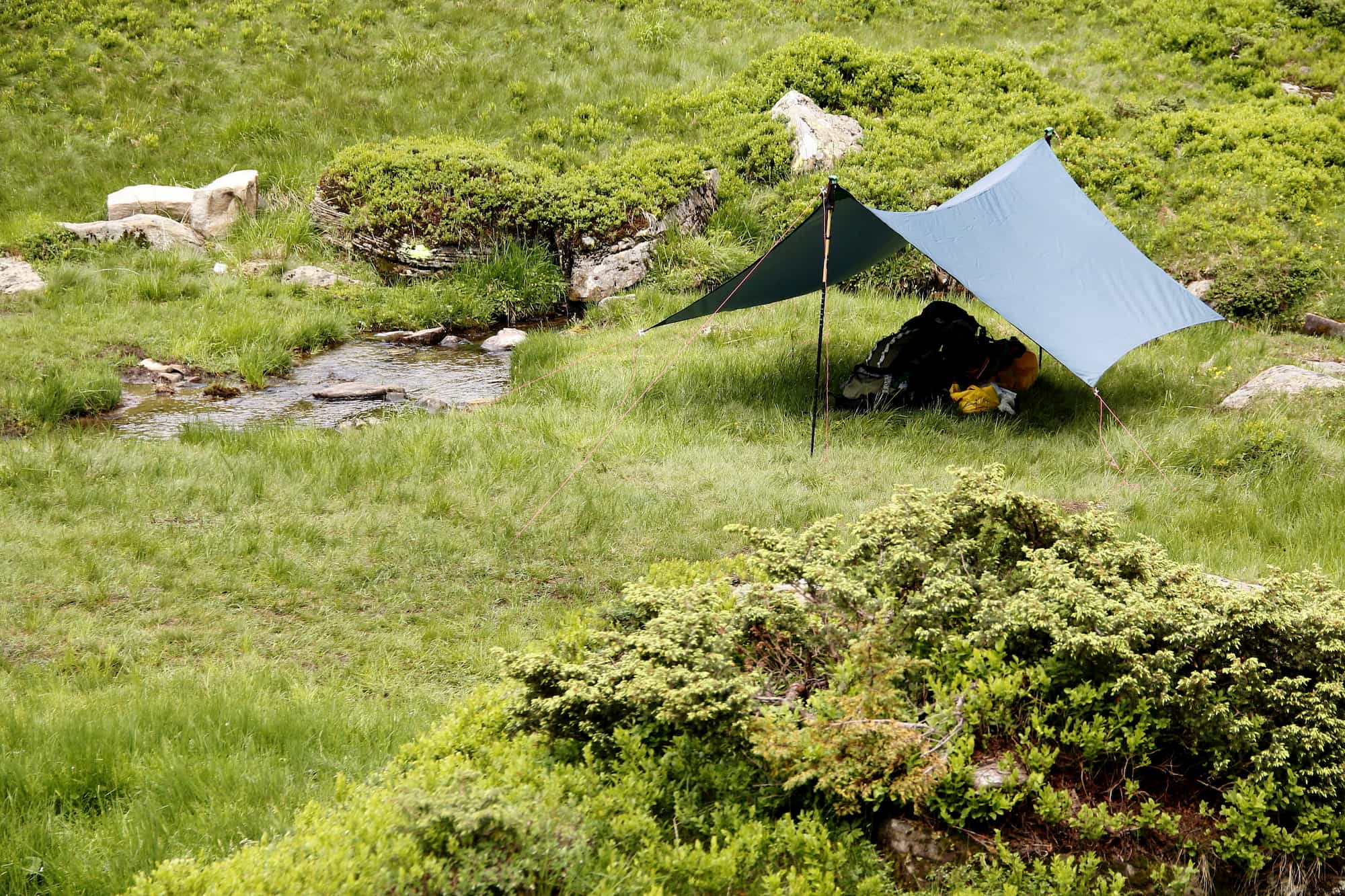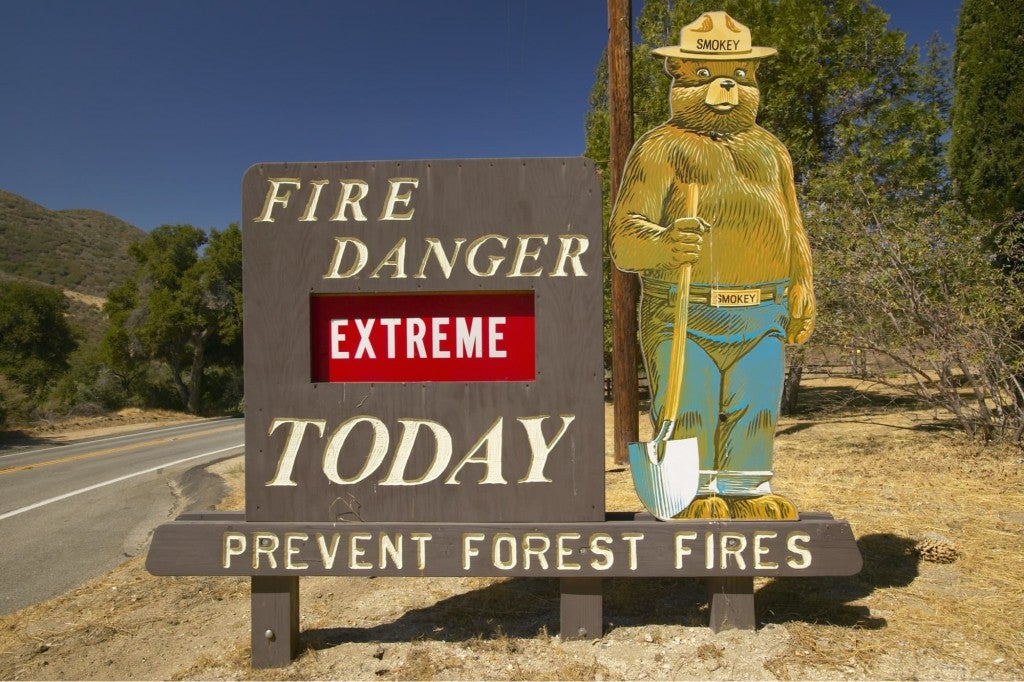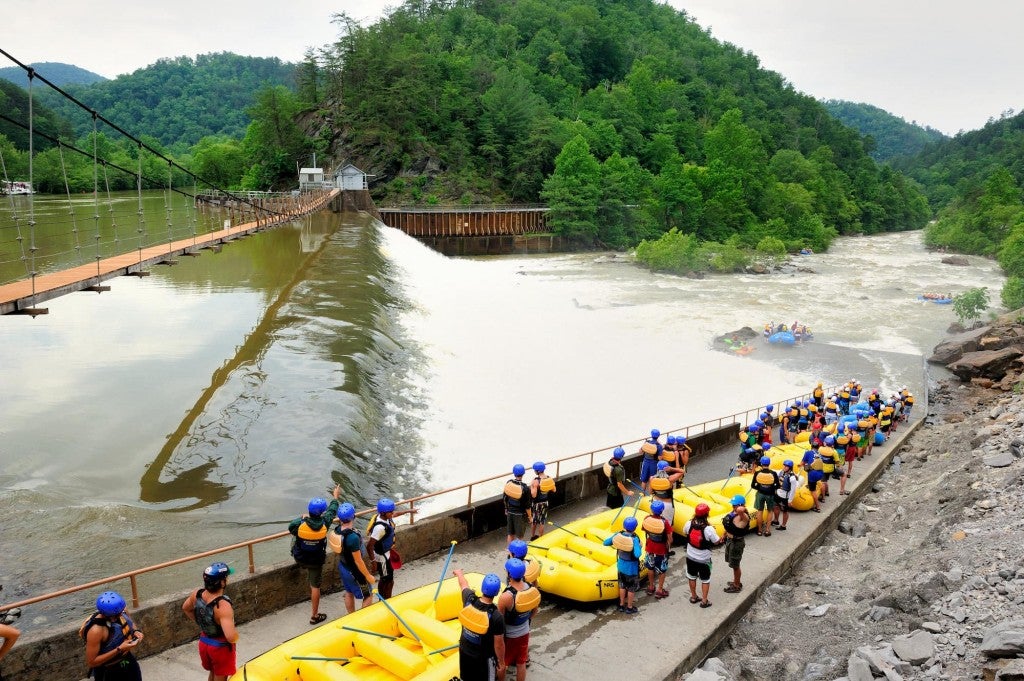This article on tarp camping is brought to you by Mountain House. Mountain House’s wide array of breakfast products are made from hearty, protein-rich foods and offer a delicious supplement to your camping experience.
The best part about camping? You don’t need a boatload of gear to get started. Many of the country’s best campsites can be camped in without an RV, a car, or even a tent — yes, even without a tent. Wondering how in the world you’ll be able to camp without the most fundamental piece of gear?
Here’s a guide on the basics of tarp camping, and how you can make your tentless campsite the envy of those around you.
What is Tent-Free Tarp Camping?
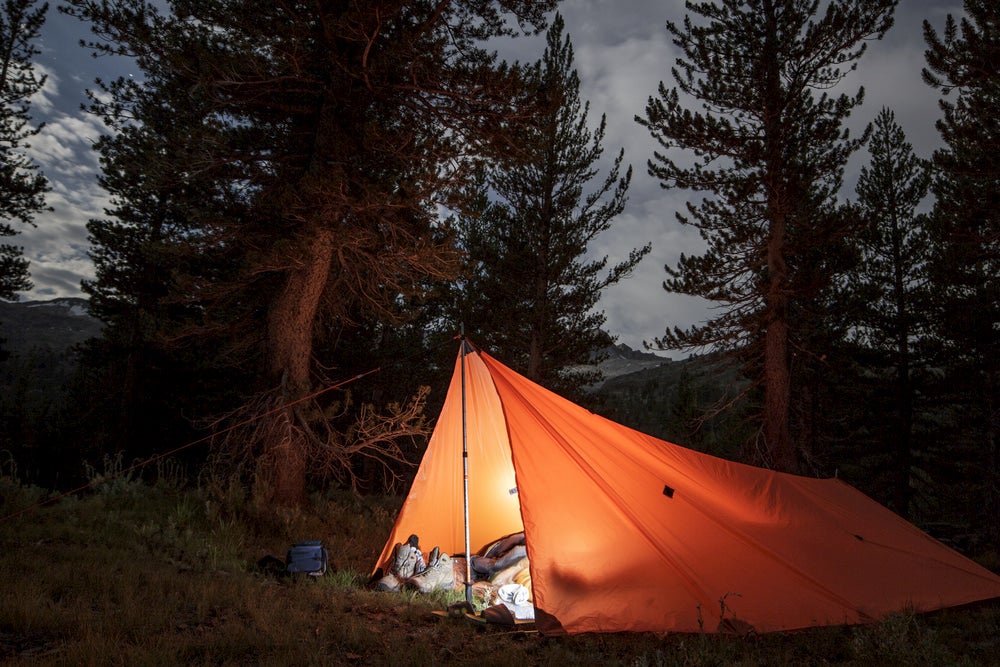
Tarp camping by nature is usually employed to accomplish one of two things: to save money on otherwise expensive gear, or to provide a lightweight alternative to tent camping. Whether you’re an advanced thru-hiker eager to cut extra weight or looking for a way to cut costs out of your annual trip with friends, tarp camping is an easy way to get outside without the hassle of a regular tent.
Why Tarp Camping Over Traditional Tent Camping?
Tarp camping lets you explore the outdoors on a budget, without having to invest in a multi-season tent or even a cheaper version that only lasts a couple of trips. By using a tarp as shelter instead of a tent, you can give the outdoors a real shot with little stake in the game. Too often, outdoor recreation is associated with high start-up costs and an insiders club that makes it hard to break into the sport. Tarp camping is an excellent way to bridge the gap by allowing people to camp without demanding an extreme financial expenditure.
Does Tarp Camping Expose You to Wildlife?
While sleeping under a tarp technically allows you to be closer to the open air, campers should take the same precautions to avoid close encounters with wildlife. These include researching the bear box regulations prior to your night out, as well as making sure to keep all food, garbage, and otherwise scented items (toothpaste, lotion, etc.) away from your main campsite. Follow these general guidelines, and you should be able to enjoy tarp camping the same as any tent!
Is Tarp Camping Colder Than Tent Camping?
The short answer is…maybe? Tarp camping, like tent camping, provides a small layer of insulation against the weather outside. Depending on the style of tarp camping you choose, your camp may be more or less exposed to the elements. That said, with the addition of a jacket or two and a quality beanie, you shouldn’t get much colder than you might be in a normal tent. In terms of addressing different types of weather such as rain, snow, or other wet conditions, tarp camping can still work for you! Just make sure you set up your camp up the hill or upstream from the water flow, so that water isn’t flowing into your shelter, and ensure the sides of your tarp are taut against the falling rain.
Where Should I Set Up My Tarp Campsite?
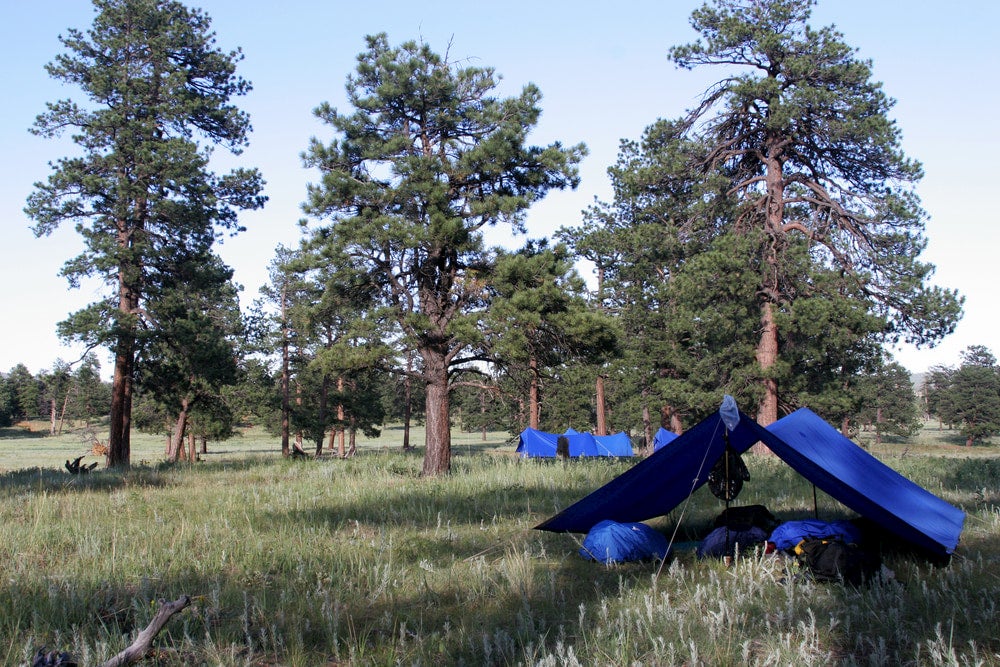
This process should be no different from your usual campsite scouting. Look for a place that’s flat, offers some natural cover (if available), and relative security from any immediate hazards (roads, well-trafficked trails, etc.). If you’re hoping to construct a lean-to tarp camp, look for trees or other waypoints that might work well to help anchor your shelter. Unlike tent camping, tarp camping doesn’t require a set footprint to make a great campsite, so feel free to get creative with where you stay!
The Basics of Tarp Camping
Already looking forward to your next tarp camping adventure? To help you make sure you have all you need to get started, we’ve created a quick how-to guide on tarp camping basics, from purchase to set up.
First things first: grab a tarp (and some rope).
Of all the steps, this one might be the easiest. If you don’t already have a tarp laying around from an old house project or packing operation, you can definitely buy one for significantly less than most pieces of outdoor gear on the market today. Tarps are found anywhere from The Home Depot to REI, and vary in material, quality, and durability. The good news? Traditional blue tarps are just as easy to use as the tarps produced by outdoor brands, and in a pinch nearly any tarp on the market will serve well as your tarp camping rig. REI offers tarps that range from $5 – $60, so feel free to go in whatever direction you choose. Regardless of what you decide to purchase, even the most expensive tarps are $200 – $300 cheaper than most high quality tents. Just be sure to purchase a tarp at least 10 to 12 feet in length and 8 to 10 feet in width. It should be plenty big enough to lay on top with your sleeping bag as well as sleep underneath.
As far as rope goes, go for paracord or utility cord, which can be found almost anywhere that sells outdoor products. Since it will only be used for tying the tarp down, you shouldn’t need more than 5 or 6 feet, but buying a bundle certainly never hurts. Traditional paracord should be plenty strong enough to secure your shelter in most cases. It’s optional, but you could decide to bring along a carabiner or two to supplement.
Second: figure out your setup.
This is a matter of personal preference and location. Depending on where you’re camping, you may not have the option to tie your tarp camping rig to the trees and create a high-ceiling setup. That said, here are a few different methods for tarp camping like a pro:
1) The easy-sleeper
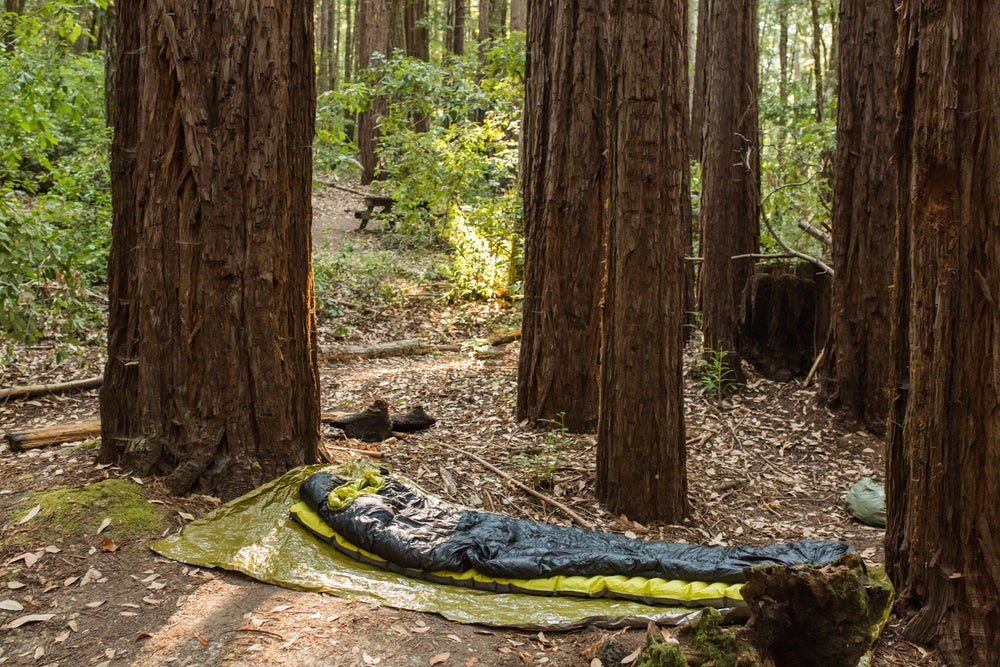
Low maintenance? A hot sleeper? Sometimes, a tarp is simply used as a groundcover. If you’re not worried about the weather, and you’re willing to keep it open and free, try sleeping on top of your tarp. It’ll provide a bit of insulation from the ground, and it will put a layer between you and any creepy crawlies.
2) The lean-to
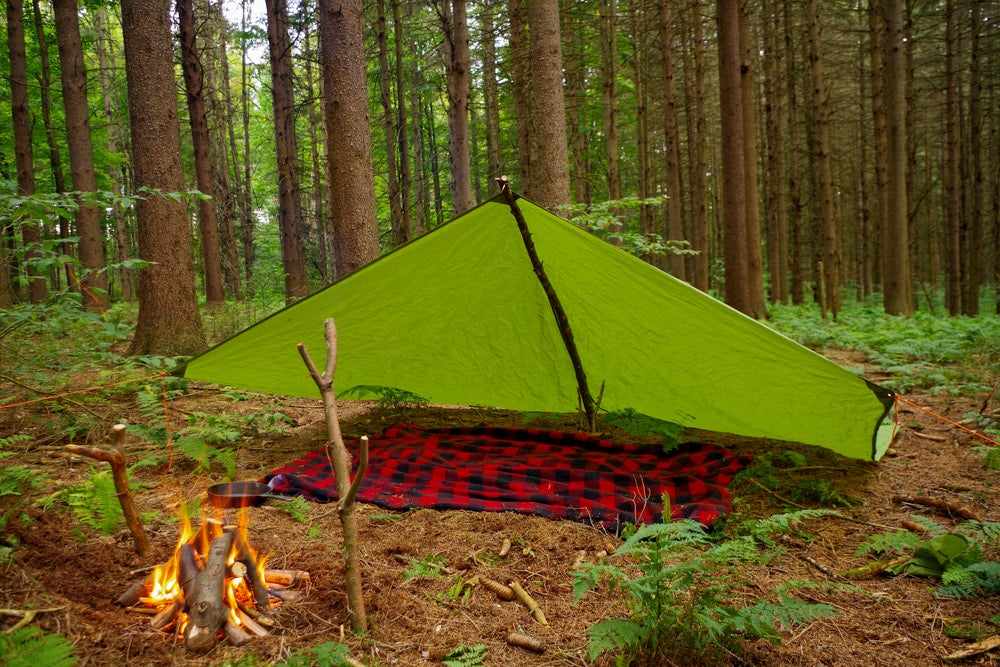
This is one of the most popular rigs for a tarp camping setup. Lean-tos can be created using small trees around you or a couple of spare ropes to tie onto tether points. The lean-to allows you to see out of your shelter without being completely isolated from the outside. This is also a great option for tarp camping in wet areas, as water runs right down the side of the tarp and onto the ground (just make sure it’s not uphill from you!).
3) The A-framer
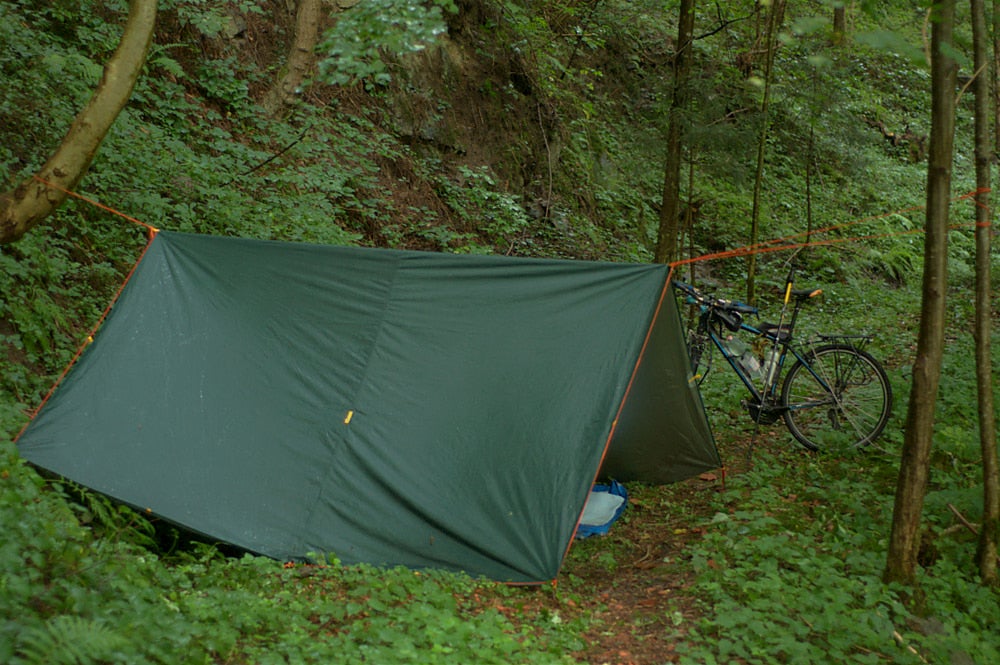
For the old-schoolers looking to reminisce on the good-old days, the A-frame is a perfect way to indulge in your childhood memories. The A-frame is a great option for folks seeking to camp in smaller areas, as this setup allows you to squeeze into places you might not otherwise be able to camp. To set up an A-frame, use hiking poles or even strong sticks as your primary stake points, and set one at each end of your shelter. Drape your tarp over your stakes, and tighten it on each side, using either natural anchor points or your own stakes. Space-savers unite!
Third: Relish in the glory of tarp camping versatility
Apart from purchasing your tarp and figuring out your optimal setup, don’t forget to enjoy yourself and the beautiful simplicity that is tarp camping! If you’re really into it, try different setups each time you go out, and figure out what works best for you in each location you camp. It may feel like a commitment to abandon your tent, but it’ll be worth it the first time you get a glimpse of the alpine sky from your cozy tarp camping home!
This article was brought to you by Mountain House.
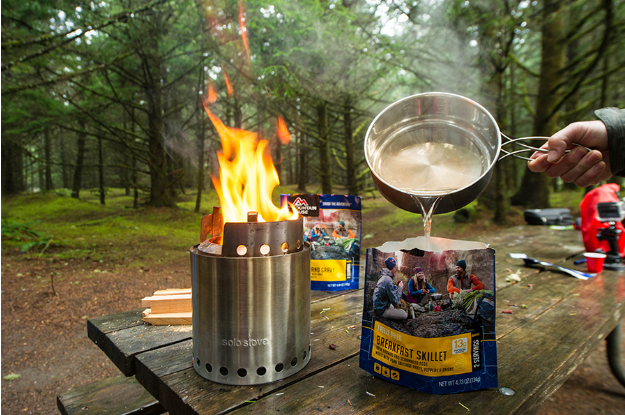
Mountain House’s camping food is like having a gourmet chef in the wilderness! Got a sweet tooth? Check out their ice cream sandwich and savor the backcountry sugar high!
The Dyrt is the only camping app with all of the public and private campgrounds, RV parks, and free camping locations in the United States. Download now for iOS and Android.Popular Articles:
Articles on The Dyrt Magazine may contain links to affiliate websites. The Dyrt receives an affiliate commission for any purchases made by using such links at no additional cost to you the consumer.

